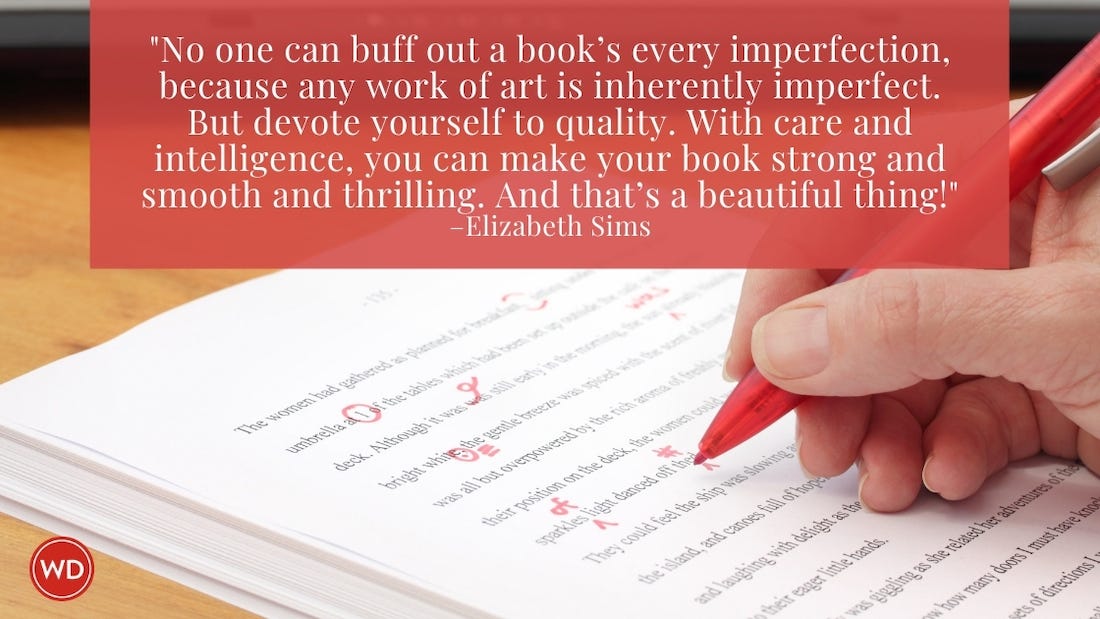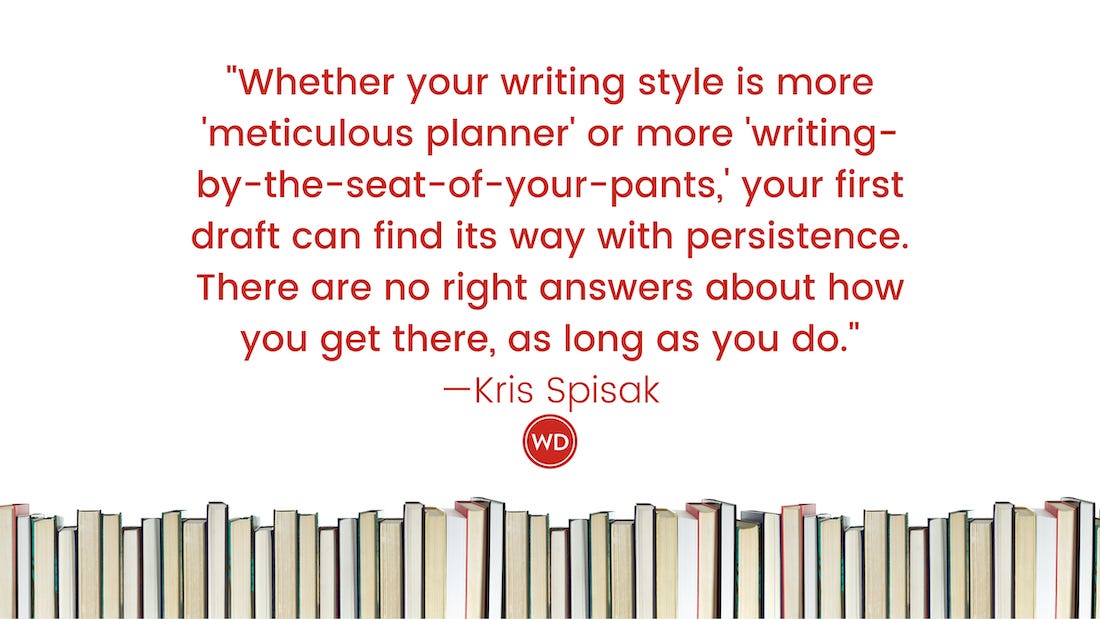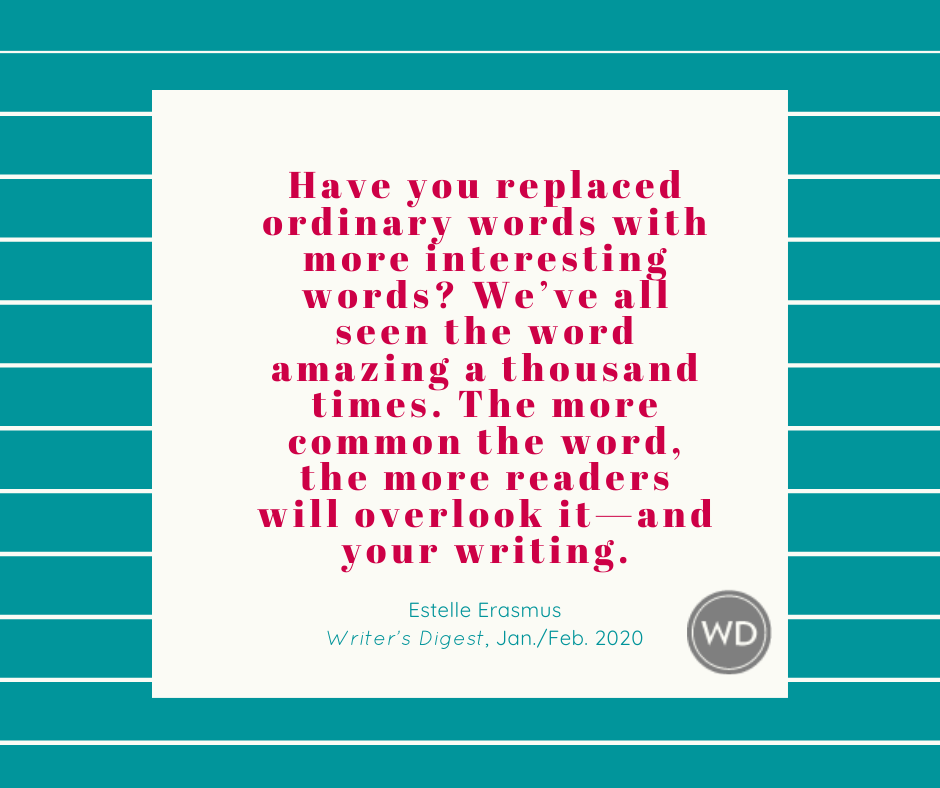Tighten the Tension in Your Novel
“Your novel is lacking tension.” “I understand the reason for this scene, but my mind kept wandering while I was reading.” “This chapter is missing a hook … I’m just…
"Your novel is lacking tension."
"I understand the reason for this scene, but my mind kept wandering while I was reading."
"This chapter is missing a hook ... I'm just not interested."
You might have received this or similar feedback from your writing buddy, critique group, or even an agent or editor ... but what do you do now? It's easy to recognize tension in the works of others—reading leaves you feeling excited, even breathless—but how do you weave it into your own pages? Cheryl St.John, author of Writing with Emotion, Tension, and Conflict, shares three ways to create and sustain tension throughout your novel.
--
1. Set up the tension.
Keep saying no to your characters. Whatever it is they want, hold it back. The best conflict is one that appears unsolvable, so heap difficult situations on your characters and make them prove their mettle. Don’t make their situations easier; always make their lives harder.
Look at your character’s goals, and ask yourself, “What’s the worst thing that could happen?” Then take the worst thing a step further. For emotional intensity, conflict should be directly related to the character’s internal goals and to his backstory. Don’t rely on “incidents”—events that could happen to anyone and don’t have emotional importance to this particular character—to carry scenes or conflict.
In the dystopian future world of The Hunger Games by Suzanne Collins, the government of Panem holds a yearly lottery to select two young participants from each of twelve districts to battle to the death as entertainment and retribution for rebellion. The so-called “Games” are televised, and the competitors must kill each other until only one remains. The worst thing that could happen to a young person in one of the twelve districts is to have their name drawn. For the protagonist, Katniss Everdeen, there is even something worse than that: The name of her fearful and delicate little sister Primrose is selected.
Katniss volunteers to take her place, and she and Peeta, a young man who once gave her family food to survive, must face opponents who have trained their whole lives for such a moment. Tension builds throughout the story as alliances are made, rules are arbitrarily changed, and one by one the other competitors are killed. Things just keep getting worse until it looks as though Katniss and Peeta will be forced to face off.
Katniss is an underdog character because of her family’s and district’s desperate situation; they live in poverty under government control and are in a constant fight for survival. In every scene of the film version the viewer roots for her to triumph. She is appealing to audiences because of her self-sacrifice and courage. Throughout the movie, each scene builds as she fights to survive. Conflict escalates until the viewer is on the edge of her seat in anticipation of the final outcome.
2. Backstory slows things down, so plan ahead.
Leaving details about the character in question until later in the story is an effective way to intrigue your readers. Don’t fill in all the answers, but give them enough so they won’t be frustrated. Backstory in a tense scene slows the pace. Save backstory for sequels, and use them only sparingly. If you need to reveal information, you can do it through a quick flash of internalization or a secondary character’s dialogue. Hint at certain details to make the reader want to know more.
But keep in mind that you can’t leave out a crucial piece of information and then just throw it in at the end because it needs to be told or because you’ve reached the end of the book. You must make the reader want to know the information by planting a seed, alluding to this mystery, and using it as a teaser. For example: “The thought of another funeral made her sweat.” It’s plain and simple. Someone dies, but your heroine won’t go to the service. The reader now wants to know why the heroine hates funerals. The lure of the unknown draws the reader further and further into the story. Revealing too much takes away the seductive lure of discovery.
These are the first sentences of my novella Winter of Dreams in the Colorado Courtship anthology:
Mr. Hammond’s telegram had assured her, due to the mild winter, that the train would have no problem reaching Carson Springs mid-January. Violet Kristofferson unfolded his message and read it again, her gaze stumbling first over the name she’d chosen. She would have to remember. Bennett. Violet Bennett.
Here I’ve told the reader that Violet is using a name that’s unfamiliar, but I don’t say why.
A few pages later, the reader sees that Violet is taken aback by her new employer’s occupation: undertaker.
He’d brought her to his funeral parlor? … She stared at the other portion of the building—right beside where she was expected to work and live and sleep. Were there—what did Mr. Hammond call them—lifeless clients in there now?
Violet imagines what lies behind the east wall of the foyer. She jumps when her new employer opens a door from the other side. He imagines that he sees her shudder. He has his own reasons for thinking she’s repulsed, but I don’t tell the reader why Violet is really afraid until much later—until it’s important for her to tell him and until the reader needs to know.
The reader must know something is missing, however. You don’t want to make him feel like he has had something pulled over on him once the story ends. We don’t want to surprise him by revealing an important fact—we want to surprise him with the revelation he has been anticipating.
Another approach is the Hitchcock technique. Let the reader know something that none of the story people know. This is successful because it keeps the reader guessing about when the character will find out and how they will react.
In a romance, love scenes are action scenes, and if you’ve kept sexual tension high throughout the first chapters, the reader is eagerly awaiting this scene. If the first love scene happens at the end of the book, it’s a resolution: By now the hero and heroine have realized they love each other and are consummating their relationship. All external conflicts should have been tied up by this time.
If a love scene takes place before internal conflict is settled, as a plot point or as an added dilemma, you must follow the scene with a new problem, hook, or story question that keeps the story moving. If you allow tension to drop, your story will stop moving forward.
This is a classic example: The hero and heroine share a tender love scene or a one-of-a-kind kiss. Everything seems blissful, and then one of them discovers some truth about the other that pushes them apart again. This is used often in books and movies because it works so well, but it’s always fun to think up something new. Give clichés another thought when you’re plotting.
Change is what keeps the reader turning pages. New challenges, new information, new twists, and added complications—all must be assured ahead of time so that your story has the potential for tension.
3. Make the reader feel emotions right along with your characters.
It doesn’t matter what kind of book you’re writing or who your characters are—a story is feelings. The more that’s at stake for your character, the more emotions he feels about events and situations. If you’ve set up your character for a big problem, you’re ready to fire it at him. Internal and external conflict and character motivation must be in place to create tension. If you want a specific reaction, set up a scene or a motivation to induce it.
Use your character’s internal conflict to its best advantage: abandonment, mistrust, emotional deprivation, dependence, social exclusion, or whatever vulnerability you create. You now must use those conflicts and fatal flaws in scene to challenge readers to keep reading and, most importantly, to keep them caring. If your character is a social outcast, create a scene to make him feel all the worse about himself. If your hero has been abandoned, his black moment is going to be when the heroine seemingly abandons him.
If you can feel the emotion, you can convey it.
--
Eliciting an emotional response from your readers will drive tension in your novel. To learn more about building emotion, tension and conflict in your novel, check out Cheryl's new book, available now.
Rachel Randall is the managing editor for Writer's Digest Books.








